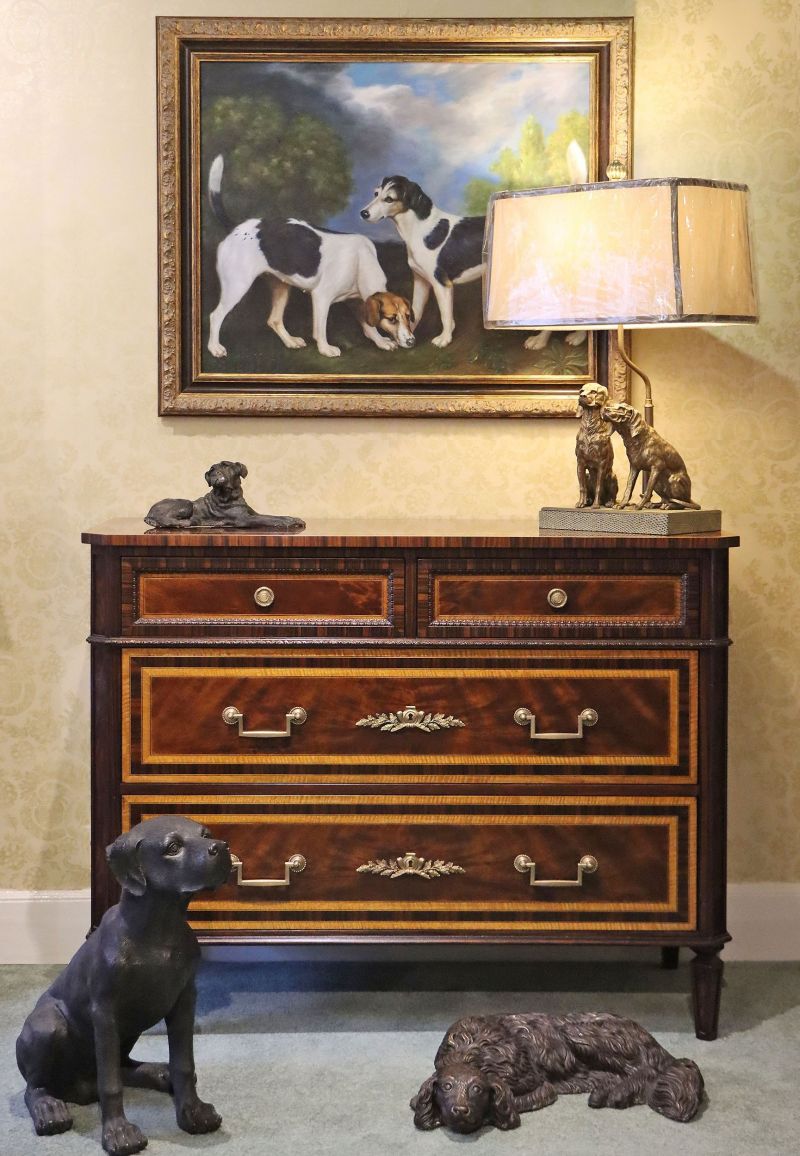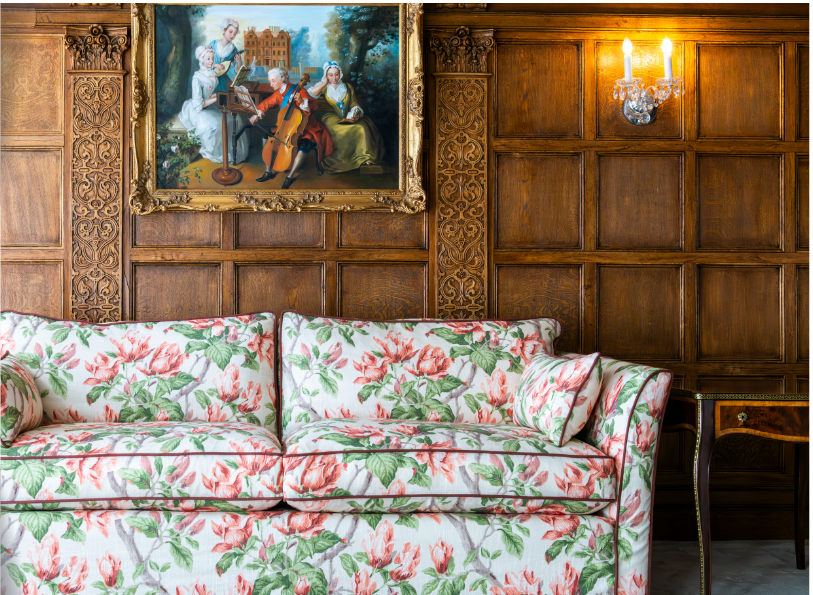Man's Best Friend Takes Pride Of Place In The Home


Man’s best friend has been a muse for artists since ancient times. There’s no doubt that dogs have always been one of the most popular subjects for art displayed in people’s homes; whether in the form of paintings, sculptures, tapestries, photography and much more. The story of dogs in interior design is long and everchanging; cave paintings, the appearance of canine companions in aristocratic portraits and garden statues are just a fraction of the ways that dogs have been immortalised in the homes of animal lovers throughout history. Symbols of friendship, protection and unwavering loyalty, it’s easy to see why they have been such a prominent part of the history of interior design.
For many thousands of years, human beings have displayed their affection and respect for their four-legged friends proudly in their properties. One of the most iconic homes in ancient history is the House of the Tragic Poet, the ruins of which were frozen in time after Mount Vesuvius erupted in Pompeii. Little is known about the family who occupied this house, but its remarkable interior decoration has fascinated scholars and historians for generations. The décor in the House of the Tragic Poet is among the finest in all of ancient Pompeii and includes the highest quality frescoes and mosaics of any Roman ruins. Perhaps the most famous mosaic in the house is a detailed artwork of a ferocious looking canine, above the words Cave Canem (beware of the dog). This magnificent mosaic was to warn visitors of the family pet/guard dog.

By the renaissance era, a well-bred dog was a sure sign of status and class, whether as a hunting dog or a pet, particularly in Great Britain. This was also the time when it was becoming increasingly popular for the upper echelons of society to commission artists to paint their portrait. As a result, royalty and the upper classes would often hang a painting of themselves with a dog on their lap or by their side as the main attraction in their drawing rooms. As well as having their pups pose alongside them for regal portraits, the classical British stately home or castle was often decorated with paintings of dogs at work.
During the 18th century, the most prominent animal portrait artist was George Stubbs. Born the son of a leather worker in Liverpool, 1724, Stubbs was a great and prominent artist who taught himself how to draw and paint. His artistry stemmed from his love and study of anatomy. His in-depth studies saw him become a teacher of anatomy at a hospital in York, where he lectured students on the bodies of humans and animals. It was this in-depth knowledge that allowed Stubbs to create such masterpieces as ?A Couple of Foxhounds? in 1792.


